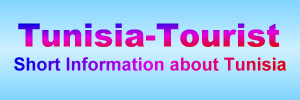What is the public transport in Tunisia like?
What is a shared taxi (Louage)?
How to travel by public transport in Tunisia?
Is the use of public transport in Tunisia safe?
Tunisia tourist homepage
What is a shared taxi (Louage)?
How to travel by public transport in Tunisia?
Is the use of public transport in Tunisia safe?
Public transport in Tunisia consists of autobus, train, shared taxi (Louage) and (individual) taxi. In Tunis, there are trams as well.
The use of public transport in Tunisia is, by western standards, very inexpensive.
All larger towns in Tunisia are connected by an autobus network, which are mostly served punctually 1-2 times a day by air-conditioned intercity buses. In addition, there are numerous local bus lines in the larger cities.
In Tunisia, there are several railway lines that connect at least the larger cities (except Zarzis and Kairouan) several times a day, largely on time and at low cost.
The wagons are pulled by Diesel locomotives at speeds of up to 100mph / 150km/h.
In the 1st class, the cars are air-conditioned and comfortable, the surcharge for a ticket of the 2nd class is not significant.
One can also buy discounted railway network cards that are valid for several days.
Louages (shared taxis, collective taxis) are minibuses with 8 or 9 seats, or station wagons with 4 to 7 seats, usually white color with a red stripe on the flanks, which operate daily, several times a day, between towns and urban areas of larger cities.
Louages drive more or less fixed routes. They wait at the stations ("Station de Louages") until all seats are sold and then drive along these routes, whereby the passengers can get on and off at any time.
The fare is payable to the ticket vendor before boarding or to the driver during the trip.
(Individual) Taxis in Tunisia have a yellow (local, in-region) or white color and a sign with a number on the roof.
There are almost always passenger cars, mostly compact cars, sometimes small taxi buses with 4 seats, which can also carry larger luggage.
All taxis are equipped with taximeters, which, for local trips, must be turned on during the trip. At night (about 2100-0500 hours), a night fare of 50% is being applied.
For (individual) taxis and local trips, the passenger should always demand that the taximeter is being used - and never accept a "negotiated" fare, because it will almost always be above the normal rates ("tourist prices"). If a driver refuses to turn the taximeter on, leave the taxi and/or rather flag down an empty taxi driving on the street than one waiting in front of an hotel or tourist attraction!
The use of public transport in Tunisia is no more dangerous than in other countries. Overall, the use of public transport in Tunisia is highly recommended, as long as the passenger keeps a bit of caution (as in "open eyes").
Additional Information:
Public transport, bus and train in Tunisia
The use of public transport in Tunisia is, by western standards, very inexpensive.
All larger towns in Tunisia are connected by an autobus network, which are mostly served punctually 1-2 times a day by air-conditioned intercity buses. In addition, there are numerous local bus lines in the larger cities.
In Tunisia, there are several railway lines that connect at least the larger cities (except Zarzis and Kairouan) several times a day, largely on time and at low cost.
The wagons are pulled by Diesel locomotives at speeds of up to 100mph / 150km/h.
In the 1st class, the cars are air-conditioned and comfortable, the surcharge for a ticket of the 2nd class is not significant.
One can also buy discounted railway network cards that are valid for several days.
Louages (shared taxis, collective taxis) are minibuses with 8 or 9 seats, or station wagons with 4 to 7 seats, usually white color with a red stripe on the flanks, which operate daily, several times a day, between towns and urban areas of larger cities.
Louages drive more or less fixed routes. They wait at the stations ("Station de Louages") until all seats are sold and then drive along these routes, whereby the passengers can get on and off at any time.
The fare is payable to the ticket vendor before boarding or to the driver during the trip.
(Individual) Taxis in Tunisia have a yellow (local, in-region) or white color and a sign with a number on the roof.
There are almost always passenger cars, mostly compact cars, sometimes small taxi buses with 4 seats, which can also carry larger luggage.
All taxis are equipped with taximeters, which, for local trips, must be turned on during the trip. At night (about 2100-0500 hours), a night fare of 50% is being applied.
For (individual) taxis and local trips, the passenger should always demand that the taximeter is being used - and never accept a "negotiated" fare, because it will almost always be above the normal rates ("tourist prices"). If a driver refuses to turn the taximeter on, leave the taxi and/or rather flag down an empty taxi driving on the street than one waiting in front of an hotel or tourist attraction!
The use of public transport in Tunisia is no more dangerous than in other countries. Overall, the use of public transport in Tunisia is highly recommended, as long as the passenger keeps a bit of caution (as in "open eyes").
Additional Information:
Public transport, bus and train in Tunisia
Tunisia tourist homepage
